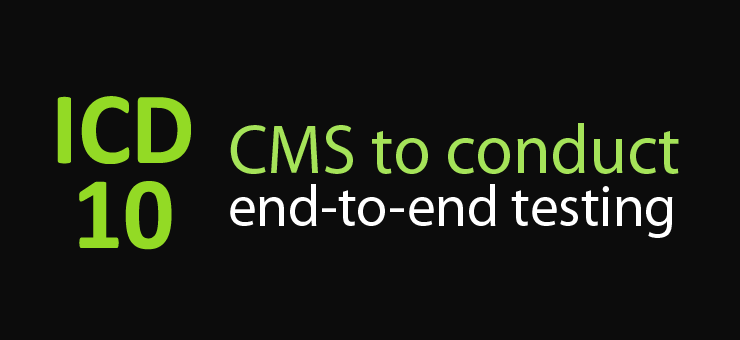The Centers for Medicare and Medicaid Services (CMS) announced on Wednesday that it will offer “end-to-end”ICD-10 testing for a small group of providers in the summer.
The announcement marks a shift from the previous stance by CMS where it had proclaimed that it would not conduct any external testing for providers.
The CMS now says that selected providers who “represent a broad cross-section of provider types, claims types and submitter types,” will submit test claims to the CMS with ICD-10 codes and receive remittance advice explaining the adjudication of the claims. Through the testing, the CMS hopes to accomplish the following:
- Providers will be able to submit claims with ICD-10 codes to the Medicare fee-for-service claims systems
- Software changes made by CMS to support the switch to ICD-10 result in properly processed claims
- Accurate remittance advice being given
The CMS announcement comes just a day after US senators Tom Coburn, John Barrasso, John Boozman and Rand Paul sent a letter to CMS Administrator Marilyn Tavenner, questioning the agency’s previous plan to only perform front-end ICD-10 testing for the first week in March.
“The significance of this transition can hardly be overstated,” the senators wrote. “The economic impact of the ICD-10 transition on insurers and medical providers will be billions of dollars. Before, either Medicare or Medicaid, could conceivably transition to any new diagnostic coding method, CMS must establish clear metrics and perform system-wide tests to certify its readiness.”
This change of stance by the CMS may also have been triggered by the criticism by the American Medical Association (AMA), which recently published a report concluding that the ICD-10 implementation costs for practices will be higher than expected. Following the AMA report, in a letter sent to the US Department of Health and Human Services (HHS) Secretary Kathleen Sebelius, AMA’s Executive Vice President and CEO James Madara vehemently called upon the CMS to “strongly reconsider” the mandate for ICD-10.

Join the Discussion!